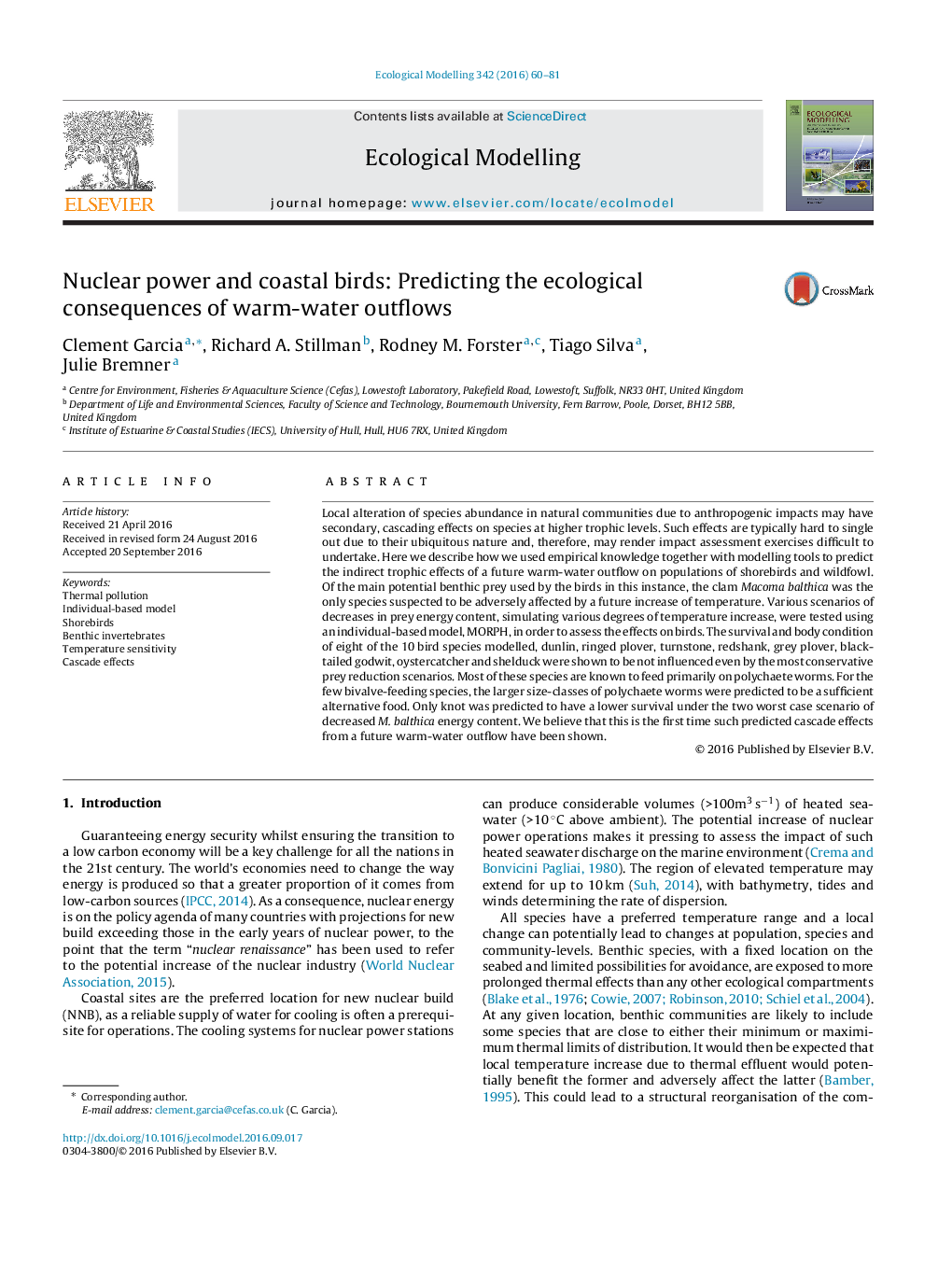| کد مقاله | کد نشریه | سال انتشار | مقاله انگلیسی | نسخه تمام متن |
|---|---|---|---|---|
| 4375494 | 1617405 | 2016 | 22 صفحه PDF | دانلود رایگان |
• Local alteration of species abundance often leads to secondary effects on predators.
• A method of predictions based on empirical evidence and modelling tool is suggested.
• A benthic prey reduction scenario on a mudflat did not affect the bird predators.
• The birds were generalist enough to switch to a non-impacted prey choice.
Local alteration of species abundance in natural communities due to anthropogenic impacts may have secondary, cascading effects on species at higher trophic levels. Such effects are typically hard to single out due to their ubiquitous nature and, therefore, may render impact assessment exercises difficult to undertake. Here we describe how we used empirical knowledge together with modelling tools to predict the indirect trophic effects of a future warm-water outflow on populations of shorebirds and wildfowl. Of the main potential benthic prey used by the birds in this instance, the clam Macoma balthica was the only species suspected to be adversely affected by a future increase of temperature. Various scenarios of decreases in prey energy content, simulating various degrees of temperature increase, were tested using an individual-based model, MORPH, in order to assess the effects on birds. The survival and body condition of eight of the 10 bird species modelled, dunlin, ringed plover, turnstone, redshank, grey plover, black-tailed godwit, oystercatcher and shelduck were shown to be not influenced even by the most conservative prey reduction scenarios. Most of these species are known to feed primarily on polychaete worms. For the few bivalve-feeding species, the larger size-classes of polychaete worms were predicted to be a sufficient alternative food. Only knot was predicted to have a lower survival under the two worst case scenario of decreased M. balthica energy content. We believe that this is the first time such predicted cascade effects from a future warm-water outflow have been shown.
Journal: Ecological Modelling - Volume 342, 24 December 2016, Pages 60–81
